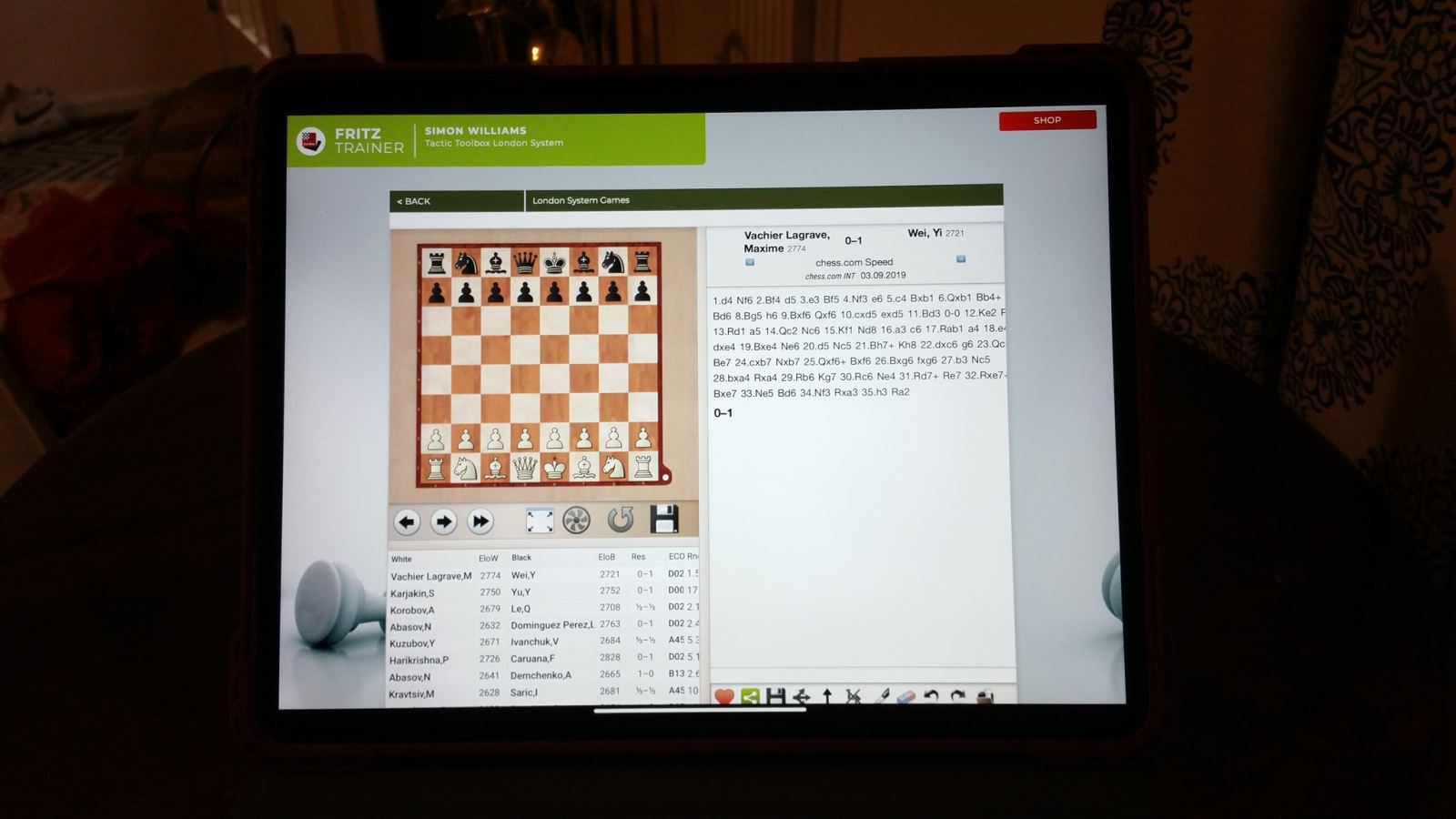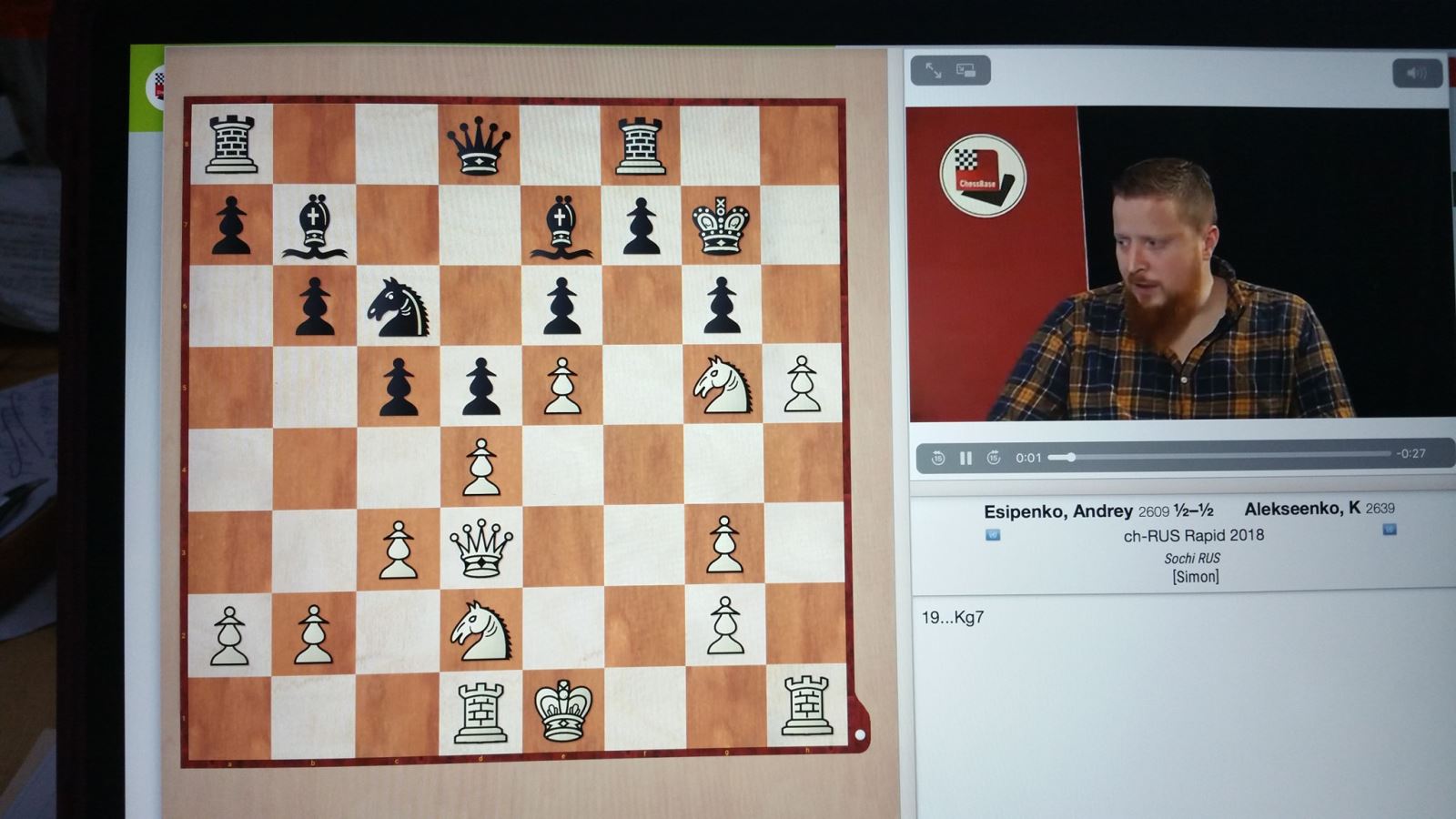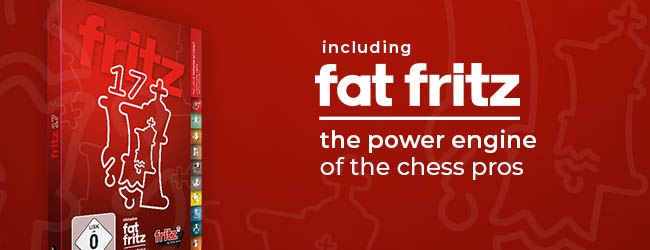Pop-up for detailed settings
We use cookies and comparable technologies to provide certain functions, to improve the user experience and to offer interest-oriented content. Depending on their intended use, cookies may be used in addition to technically required cookies, analysis cookies and marketing cookies. You can decide which cookies to use by selecting the appropriate options below. Please note that your selection may affect the functionality of the service. Further information can be found in our privacy policy. [Bitte Link implementieren].

by Davide Nastasio

2/23/2020 – Traps, tricks, pattern recognition, all in one FritzTrainer! And of course a deeper understanding of the London system! Finding the right ideas for each position starts with knowledge of the typical tactical patterns. But equally important is to anticipate Black's plans and be able to neutralize them! DAVID NASTASIO takes a first look at a FritzTrainer his iPad!
On this DVD, Simon Williams shows all the complications in the London System one has to know as White, giving you the tactical tools for a successful practice – the player who knows the typical motifs has an advantage over the board.
A game of questions
Studying openings is important to get into the middlegame in a good position — in this modern age with short time controls the study of the opening should extend even to the endgame in some lines! Good opening preparation gives a player calm and confidence at the board. When one is not fully prepared, the result is anxiety.
According to GM Simon Williams, the way to win games is to find the right middlegame plan, spot the right tactics, including stopping our opponents' tactics. Every opening has common patterns which occur in the middlegame, and recognizing such patterns is the duty of the student who wants to be really prepared for a tournament.
A skilled teacher like Williams explains how repetition is necessary during the over 100 interactive questions contained in these 50 video-clips — the famous "spaced-repetition", adopted in schools to help the students learn a good amount of information, and retain it when examined.
While we don't know for sure if spaced-repetition will work to improve our chess, it's safe to say that becoming familiar with a topic, and seeing the same patterns over and over for a certain opening, can surely help us to recognize such patterns when they do happen over the board in our games.
On this DVD, Simon Williams shows all the complications in the London System one has to know as White, giving you the tactical tools for a successful practice – the player who knows the typical motifs has an advantage over the board.
I like to tell my students that chess is a "game of questions." During a game, a player must ask questions incessantly. Through finding their answers he will know what to do. Williams does the same here — he says he'll show positions which come from different variations of the London, and the viewer should ask himself: from which line did this position come?
This kind of retrograde analysis is very important, because immediately one can understand what are the needs of the position. This happens when we transpose into other openings; knowing which opening we transposed to helps to know which pieces are good or bad, or where they should be positioned. For example after the moves 1.e4 d5; if White wants to avoid the Scandinavian, he could play 2.e5 at this point Black could think of this position as an Advanced French in which the "bad bishop" of the French can be developed outside of the pawn chain with 2...♝f5!
And after the moves: 3.d4 e6 we have the French advance, with Black smiling happyily, because the light squares bishop is outside the pawn chain created by the pawns on: f7-e6-d5.
In this FritzTrainer, Williams gives a lot of tips to learn the London. For example he offers names of champions we could use as role models. Gata Kamsky is definitely one of the names to know for playing the London. Williams mentions recommends reviwing Kamsky's games in order to pickup ideas which give White a good position. This FritzTainer comes with a bonus database containing 100 games played in the London.

Games database on iPad
Here a sample of few of Kamsky's brilliant games.
Kamsky played many more games in the London, if one wants to see them all, the right ChessBase product is Megabase 2020 with its over 8 million games and weekly updates, so one can see all the latest trends in the London, and how Black fights against the opening.
The ChessBase Mega Database 2020 is the premiere chess database with over eight million games from 1560 to 2019 in high quality. Packing more than 85,000 annotated games, Mega 2020 contains the world‘s largest collection of high-class analysed games. Train like a pro! Prepare for your opponents with ChessBase and the Mega Database 2020. Let grandmasters explain how to best handle your favorite variations, improve your repertoire and much more.
Magnus Carlsen is another champion who uses the London System regularly.
While perusing the database of games coming with this FritzTrainer, I found out the young Indian talent Nihal Sarin is also a practitioner of the London, and since he is such a great player, at such young age, I began to watch his games right away. It is interesting to see how GM Sarin transposes into other openings when necessary. In one case the opening began as a Jobava-London and became a Pirc. But in general Sarin's games are important, because one can notice how versatile the London system is, especially in the hands of a connoisseur, who keeps it fresh, and uses different lines against Black's usual responses.
Here a small sample of his masterpieces!
The FritzTrainer is divided into six different chapters, five of them are made up of ten positions each, and the last one has just three. The first ten positions show the complications from the Greek gift.
The first position presented shows how sharp the London System can be. Black just played 9...c4 how to continue as White? Try it against the engine:
The second chapter deals with overprotection, and hanging pieces. The third set of exercises introduces the idea that some tactics are possible based on where our opponent placed some of his pieces. Each piece has a function, sometimes the opponent doesn't realize how moving one piece affects the entire position, and this is the theme of these positions chosen by Williams.
One cannot help but notice Williams is also teaching us how to think when we see an initial position, because he asks himself questions like where the piece came from, imagining the maneuver, and then imagining the future square that piece will go to. This thinking process from Williams is a bonus that cannot be learned from a book. We need a live teacher, talking to us, in order to grasp it and make it our own. The fact the video clips are not 20 minutes long, but just 1-2 minutes is definitely important, because it's easier to keep the focus and concentration high. Some positions needs deep calculation. Since I know they will happen in tournament games, I placed the position on a board, to have a more realistic approach, which would better simulate tournament conditions.
The fourth set of positions deals with recurring tactical patterns. For example one of the common Tal's sacrifices involved the square f7, this happens also in the London, and Williams shows when. The last series of ten positions begins showing an Anastasia mate. The last section is made up of two positions, and a final video in which Williams give us few hints on how to improve our understanding of the London system, and a training method. Personally I truly enjoyed the FritzTrainer, the training, the ideas and tactical patterns learned — definitely something worth having.
FritzTrainer on iPad
Now let's come to the iPad part of this review! Last year I began to notice that with the normal PC download there was also a download for Mac. Mistakenly I thought the download for Mac would work on an iPad, and began to toy with the idea of getting one. This wasn't the case. But this year, I saw ChessBase began to also publish some of their DVDs for the iPad so I picked up an iPad Pro with a gigantic and beautiful screen: 12.9" - 512 GB of memory, so that I can eventually go on vacation bringing just my ipad instead of my heavy notebook!
The reason for the 12.9 screen is simple, my eye doctor said I needed reading glasses, and I thought: "who needs reading glasses, if I can just buy a bigger screen?" A no brainer.

Intro screen on ipad
The iPad Pro has a very long running battery, it's definitely always ready compared to the notebook which one must turn on and wait minutes (let's not speak of the new notebook I bought with windows 10, when it magically decides to auto-update in the middle of something, one can go to buy groceries and return back in few hours). The iPad is thin and light can be used everywhere: car, bed, sofa, nice comfy recliner etc.
The iPad version has a similar interface to the online apps ChessBase developed in the last few years. When Williams stops and ask for finding a move, there is an annoying "enter your move" in the middle of the board...

Enter your move!
Since I generally get it right on first try, I found the sign in the middle of the board quite annoying. But once I didn't get it right, and it told me to retry, luckily it went away.

Please try again
I maximized and enlarged the board by mistake, and then I couldn't make it back to normal size — it became bigger than the screen, again my mistake.

Downloading...
Sometimes during the video appeared the writing "downloading" in the middle of the board, I don't understand why, since I thought I downloaded the DVD on the Ipad. This could be a problem in case I'm on the road and there is no internet connection.
![]()
Pixellated
And sometimes during the first video Williams face became pixellated, like if one has a bad internet connection.

Button forward and backward
The buttons for forwarding the video 15 seconds or going back 15 seconds are quite small. Since on that side of the window there is space, it would make sense making them bigger.

Microscopic algebraic
The numbers and letters of the algebraic coordinates around the board are microscopic, maybe they could be made bigger. I don't need those letters and numbers, but I know some amateurs still don't know each square, so it can be difficult if the lecturer mentions a square like g4, and he doesn't highlight it, to let the viewer know where it is.
For all the rest, it's similar to the version on computer, or to be more precise: the version we could get on ChessBase video app online.
Pro and Con
I loved how I learned to think about chess thanks to Williams constant reminders of how we should think during a game, while analyzing positions, and often discovering it wasn't clear to me how to continue. Yes, this is the reason why a serious learner of the London System should have this DVD, Williams didn't select only flashy sacrifices on h7, but a varied sample of positions from real games in which White had to solve some problems in order to be successful. Another advantage of this type of FritzTrainer is you can use it for training before a tournament. The video clips are short, but they go immediately to the point. Watching them a couple of days before a tournament can help as reminder of the maneuver and ideas needed to play the opening flawlessly.
Final thoughts
Williams has packaged a neat training DVD, giving us the tools for thinking. For example in the first section he has put some tricky positions to test us if we were on automatic pilot, or using our brains. This kind of teaching "cheat" can happen only if we have a human teacher, who spots our human weaknesses, and shortcomings. A computer definitely rated 6-700 points over Williams cannot teach us how to play or what dangers to avoid. The result could have been a lost game, instead thanks to Williams teaching expertise, we have gained experience from a thoughtful lesson. In general, throughout the videos, Williams reminds us of important ideas we need to apply in our games, like being aware of what our opponents want to do and stop it. This is mentioned in many chess books: the famous prophylaxis, so important to improve level as chess players. Another important point is to gain confidence to play an opening. The 50 exercises chosen by Williams help us in this confidence building. Giving us the knowledge of the many tactical patterns typical of the London system. Definitely a must have FritzTrainer in view of tournament preparation. I hope Williams makes also other tactics-focused video series in this format.
Links
"tactic" - Google News
February 23, 2020 at 06:03PM
https://ift.tt/38QmFXK
Learn London tactics on iPad - Chessbase News
"tactic" - Google News
https://ift.tt/2NLbO9d
Shoes Man Tutorial
Pos News Update
Meme Update
Korean Entertainment News
Japan News Update
Bagikan Berita Ini
























0 Response to "Learn London tactics on iPad - Chessbase News"
Post a Comment